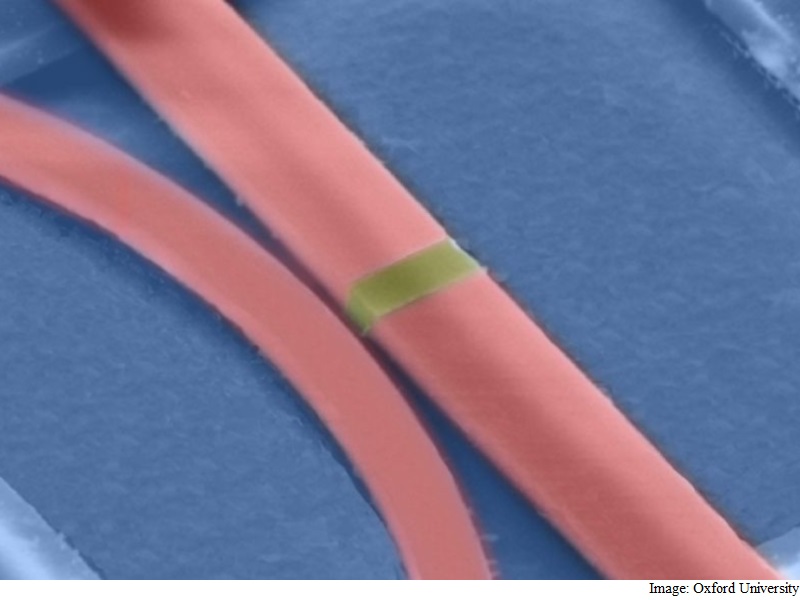- Home
- Science
- Science News
- First Non Volatile Light Based Memory Chips Developed
First Non-Volatile Light-Based Memory Chips Developed

The new non-volatile memory uses the GST phase-change material - the same as that used in rewritable CDs and DVDs - to store data.
This material can be made to assume an amorphous state, like glass or a crystalline state, like a metal, by using either electrical or optical pulses.
The team has shown that intense pulses of light sent through the waveguide can carefully change the state of the phase-change material.
An intense pulse causes it to momentarily melt and quickly cool, causing it to assume an amorphous structure; a slightly less-intense pulse can put it into an crystalline state.
"This is a completely new kind of functionality using proven existing materials," said professor Harish Bhaskaran from Oxford University's department of materials.
"These optical bits can be written with frequencies of up to one gigahertz and could provide huge bandwidths. This is the kind of ultra-fast data storage that modern computing needs," he noted.
Today's computers are held back by the relatively slow transmission of electronic data between the processor and the memory.
"There is no point using faster processors if the limiting factor is the shuttling of information to-and-from the memory. But we think using light can significantly speed this up," Bhaskaran explained.
For the study, the material scientists at Oxford University worked in collaboration with scientists at Karlsruhe, Munster and Exeter universities.
With this device, "we could read and write to thousands of bits at once, providing virtually unlimited bandwidth", explained professor Wolfram Pernice from University of Munster.
The team is working on a number of projects that aim to make use of the new technology.
They are particularly interested in developing a new kind of electro-optical interconnect, which will allow the memory chips to directly interface with other components using light, rather than electrical signals.
The paper was published in the journal Nature Photonics.
Get your daily dose of tech news, reviews, and insights, in under 80 characters on Gadgets 360 Turbo. Connect with fellow tech lovers on our Forum. Follow us on X, Facebook, WhatsApp, Threads and Google News for instant updates. Catch all the action on our YouTube channel.
Related Stories
- Samsung Galaxy Unpacked 2025
- ChatGPT
- Redmi Note 14 Pro+
- iPhone 16
- Apple Vision Pro
- Oneplus 12
- OnePlus Nord CE 3 Lite 5G
- iPhone 13
- Xiaomi 14 Pro
- Oppo Find N3
- Tecno Spark Go (2023)
- Realme V30
- Best Phones Under 25000
- Samsung Galaxy S24 Series
- Cryptocurrency
- iQoo 12
- Samsung Galaxy S24 Ultra
- Giottus
- Samsung Galaxy Z Flip 5
- Apple 'Scary Fast'
- Housefull 5
- GoPro Hero 12 Black Review
- Invincible Season 2
- JioGlass
- HD Ready TV
- Laptop Under 50000
- Smartwatch Under 10000
- Latest Mobile Phones
- Compare Phones
- Realme P4x 5G
- OnePlus Ace 6T
- Nubia Flip 3
- Nubia Fold
- OPPO A6x 5G
- Samsung Galaxy Z TriFold
- Poco F8 Ultra
- Poco F8 Pro
- Asus ProArt P16
- MacBook Pro 14-inch (M5, 2025)
- Poco Pad M1
- Poco Pad X1
- Just Corseca Skywatch Pro
- Honor Watch X5
- Acerpure Nitro Z Series 100-inch QLED TV
- Samsung 43 Inch LED Ultra HD (4K) Smart TV (UA43UE81AFULXL)
- Asus ROG Ally
- Nintendo Switch Lite
- Haier 1.6 Ton 5 Star Inverter Split AC (HSU19G-MZAID5BN-INV)
- Haier 1.6 Ton 5 Star Inverter Split AC (HSU19G-MZAIM5BN-INV)

















